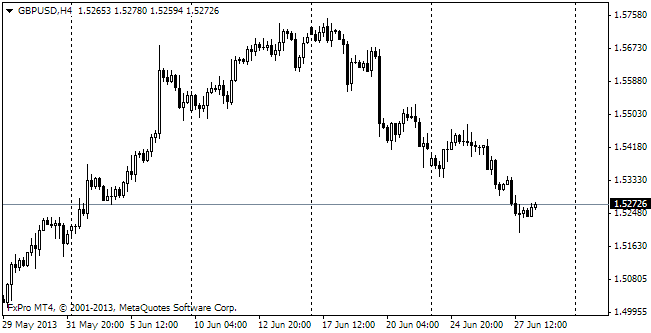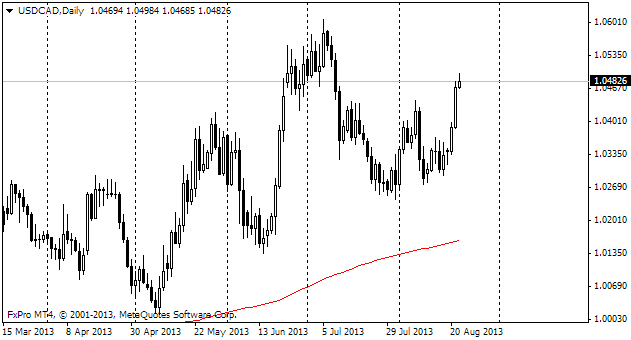EUR/usd
The US dollar retained the positions gained on Thursday, remaining at 1.36 against the euro. In the meantime, commentators are considering the issues of the Portuguese Bank as a small hitch, which shouldn't be exaggerated. They'd better regard it as a canary in the coal mine. Anyway, in general investors are positively disposed now, which is mainly a result of the strong US employment statistics. These data (employment growth by 288K in June and returning of the weekly unemployment claims close to 300K) increase chances of inflation acceleration in the coming months. Yet, the participation rate is rather low and in the coming months the labour market will be flooded with college and university graduates, which will raise supply in the market. Even if there is no chance to speak about sharp increase in competitiveness in the labour market due to quick employment growth, we still can expect growth of US spending. In the short term, this factor is pernicious for the dollar, but in the long term it should inspire the Fed with confidence about toughening of the monetary policy. But now we still see how the short-term ambitions of the single currency go beyond keeping hold of 1.3600. Bulls are planning to take the pair above 1.3600, investors are not yet disappointed with the euro's ability to grow under the current conditions. The traders, staking on growth, are supported by the overall intensification of demand for risky assets. The reflex memory – to sell the dollar on good news – is taking its effect. The favourable corporate reports disperse the fear before the coming correction, supporting demand for usdjpy, but let's leave it for a later moment.
GBP/USD
Giving a closer look to the cable's performance, we can notice some sliding of the rate. Although it hardly frightens the long-standing bulls, short-term investors may treat it as a signal to stop the rally. Some stats on the business activity are no longer reassuring. So, eventually we can witness a more obvious correction on the inflation and employment stats, as it was on Friday with CAD.

USD/JPY
The pair still remains below its 200-day MA, which speaks about strength of bears and weakness of the US dollar. However, a fresh tide of risk demand enables USDJPY to trade at 101.50 already now. Earlier in the week we saw its reversed phase – decline due to falling of the stock market, which triggered a drop to the support level and below the 200-day MA. Now we are cautious about the short-term prospects of the pair, but with satisfaction note the resumption of purchasing at the levels where it was observed at the end of January.

USD/CAD
The sudden decrease in the Canadian employment on Friday caused across-the-board weakening of the Loonie. usdcad grew by over a figure to the rates set at the moment of the data release. We expected such an outcome due to the correction after the anti-rally and suppose that the growth may continue for a while, even without the help of USD's growth.
